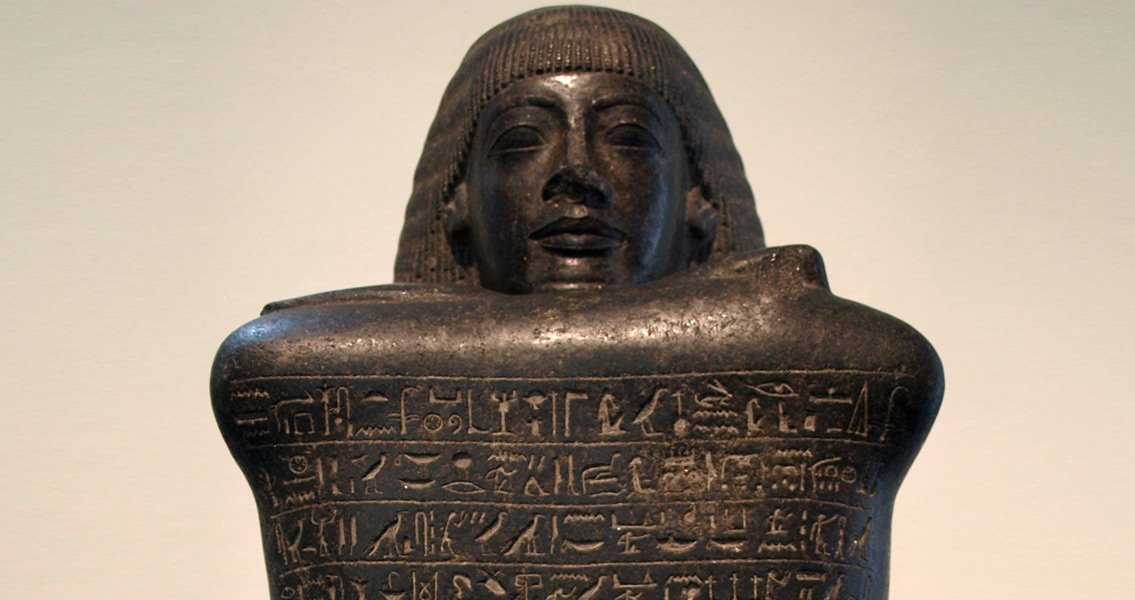<![CDATA[Inside the tomb of Amenhotep-Huy, an Egyptian vizier and viceroy under Pharaoh Amenhotep III, whose reign lasted from 1391 BCE to 1353 BCE, a group of Spanish archaeologists from the Institute for the Study of Ancient Egypt in Madrid discovered a second sarcophagus from the 22nd dynasty (943 BCE - 716 BCE) in a niche that had been carved into the tomb’s rock approximately 500 years after the death of Amenhotep-Huy. The newly unearthed sarcophagus, which was found to be well preserved and in excellent condition, has been identified as that of Ankh-f-n-khonsu, a high priest of Amun Ra, an ancient Egyptian god. According to Mahmoud Afifi, head of the Ancient Egyptian Antiquities department, the sarcophagus was constructed in the distinctive 22nd dynasty style – carved from wood and covered with a thin layer of plaster. On the outside of the sarcophagus are representations of Ankh-f-n-khonsu’s facial features which show him wearing a crown of flowers and a wig accompanied by colorful ribbons. A necklace and ceremonial beard decorate his chest and he’s holding a small bunch of papyri flowers. Additionally, the sarcophagus has several hieroglyphic engravings and scenes which feature the deceased making offerings to the Egyptian deities: Osiris, Anubis, Nefertem, and Hathor. Discovered in 1978, the tomb is located at Qurnet Marei, in the Theban Necropolis along Luxor's west bank. The multinational team has been renovating and studying the architectural aspects of the tomb since 2009. According to one archaeologist a majority of the scenes depicted inside the tomb feature the vizier’s daily activities which involved fishing, hunting and agriculture. There are also scenes of female dancers and musicians, and others which show Amenhotep-Huy with his family members as they’re met by high priests. There’s no mention of scenes associated with Ankh-f-n-khonsu being found anywhere other than his own sarcophagus. The Theban Necropolis was used for the ritual burials of several Pharaohs, high officials and noblemen beginning in the New Kingdom Period (1580 BCE-1080 BCE) and continued for more than a millennium. The discovery illustrates the curious practice among many ancient Egyptians – the recycling/reuse of burial tombs, up to and including the burial goods and even the coffin itself. Some researchers have posited that this reuse of burial items and spaces was common during certain periods, especially those which experienced financial hardship. Ancient Egyptians believed a proper burial was necessary to achieve salvation in the afterlife, therefore a large amount of care and attention to detail was taken in the burials of elites. The reality though, even for elites, was that tombs were robbed starting almost immediately after the deceased had been interned, making the empty spaces a practical alternative. While the burial practices for the elites of Egyptian society are well known and documented, the less-prominent members of Egyptian society – the people performing the work on the elaborate and often grandiose tombs – had no role in the elaborate rituals (embalming, a stone tomb to protect the body, and burial items) themselves. Burial practices for the none elites remain a mystery because no graves or remains have survived. Image courtesy of Wikimedia Commons user: Captmondo ]]>
Newly Discovered Sarcophagus Highlights Tomb Recycling
